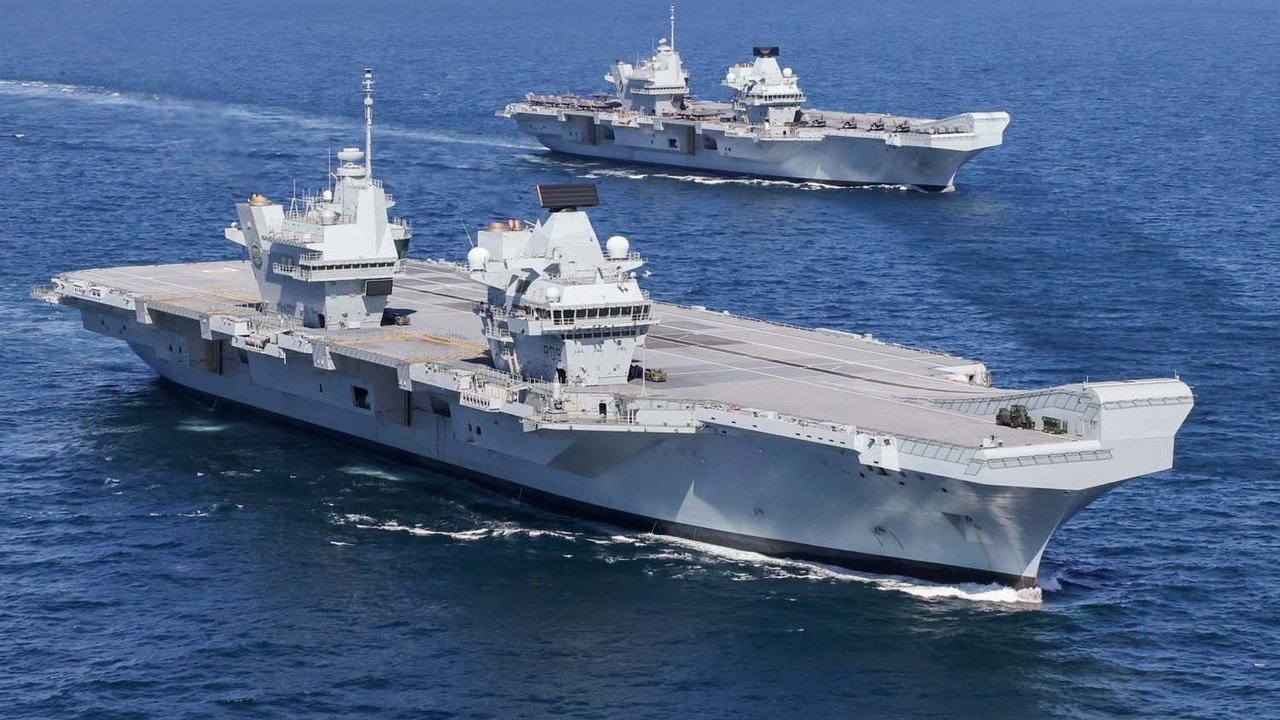The UK Royal Navy’s HMS Prince of Wales (R09) – its newest and largest aircraft carrier and warship – spent several months undergoing repairs after the aircraft carrier broke down before a deployment to the United States more than a year ago. While the vessel is now conducting joint operations with the United States Navy, there might be a serious problem with her sister carrier HMS Queen Elizabeth (R08).
The senior service’s flagship, which began her autumn deployment with the UK Carrier Strike Group on September 8, returned to her home base in Portsmouth on Sunday, after taking part in a NATO and Joint Expeditionary Force exercise. Eight Lockheed Martin F-35 Lightning II fighters were still lined on the carrier’s 280-meter-long flight deck – as the vessel had been conducting training flights with the fifth-generation fighter. That included the world’s first F-35 night-time shipborne rolling vertical landing.
“In an unusual sight, the F-35B Lightnings embarked on the carrier remained on her flight deck as she returned to Portsmouth Naval Base,” Forces.net reported.
A Royal Navy spokesperson said the carrier’s stay in port would be brief, but didn’t elaborate on why the flagship made the sudden return – as the flattop was not expected to be back in Portsmouth until mid-November.
“HMS Queen Elizabeth has returned to port for a logistics stop and a short period of maintenance,” the spokesperson told media outlets including Forces.net.
Is There a Problem With the British Aircraft Carriers?
The fact that the aircraft – which normally join or leave the carrier once she is out to sea – were still on the flight deck has led to speculation on social media that HMS Queen Elizabeth was rushed back to port for urgent repairs to her lift.
Footage of the carrier’s return to port has been posted to X – the social media platform formerly known as Twitter.
If there is a serious issue with the carrier, it would be another blow to the Royal Navy and to the ruling Conservative government, which came under fire for the slow progress and high costs for the repairs of HMS Prince of Wales. Her return to service was further delayed due to the availability of parts – a fact that highlighted troubles the Royal Navy could face in a major crisis.
After HMS Prince of Wales broke down in August 2022 off the coast of the Isle of Wight, the 65,000-ton warship had to be towed to Rosyth, Scotland, for repairs, which reportedly cost the UK taxpayers upwards of £25 million ($30.5 million USD). Both of the propeller shafts needed replaced, just a few years after the ship had entered service.
This is also not the first issue with the UK’s two carriers. HMS Queen Elizabeth’s initial sea trials in the spring of 2017 had been delayed due to a series of technical issues.
HMS Prince of Wales experienced flooding in May 2020 that caused minor damage – while more significant flooding from a fire control system in October of that same year caused damage to her electrical cabling. The carrier was confined to docks for almost eight months – limiting her time at sea to just 30 days in 2020.
The two advanced aircraft carriers were meant to signal that the Royal Navy was truly back on the global stage and was again the most powerful naval force in Europe, but these breakdowns are questioning whether that is true.
Author Experience and Expertise
A Senior Editor for 19FortyFive, Peter Suciu is a Michigan-based writer. He has contributed to more than four dozen magazines, newspapers, and websites with over 3,200 published pieces over a twenty-year career in journalism. He regularly writes about military hardware, firearms history, cybersecurity, politics, and international affairs. Peter is also a Contributing Writer for Forbes and Clearance Jobs. You can follow him on Twitter: @PeterSuciu.
From the Vault

